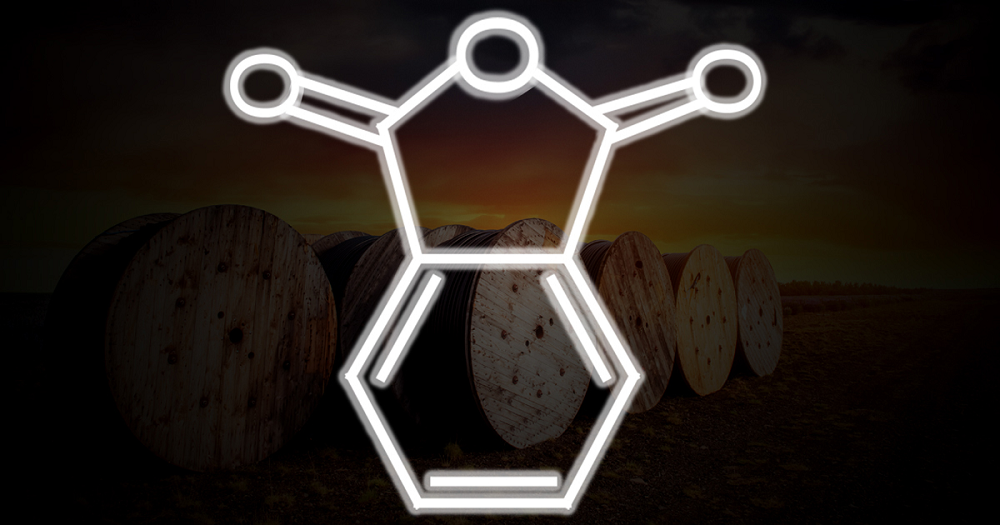Molecule pet name: Phthalic Anhydride
When looking under the microscope we have noticed, how molecules often have a resemblance to completely different things and that some of them simply should come with a ‘pet name’, based on what they look like. With the winter season upon us, we are looking at molecules reflecting this time of the year. Today, we are taking a look at Phthalic Anhydride under the microscope.
Take a look at the Phthalic Anhydride molecule from above. Do you see a link to the winter season?

For us, the link is clear. We can simply not unsee the resemblance between the Phthalic Anhydride molecule and a snowman. Do you see it now as well?
Having a molecule taking the form of a snowman is not the only link Phthalic Anhydride has to the winter season. At Perstorp, Phthalic Anhydride comes in two forms: flakes and molten. With a dash of imagination, it’s not hard to imagine the white flakes of Phthalic Anhydride as snowflakes transforming the landscape to a beautiful winter wonderland. Or picturing the time of the year, when the spring and sun finally appears again after months of darkness, melting (molten) away the snow and ice.
For the toughest outdoor applications and environments
While Phthalic Anhydride is mainly used as a raw material for our C10 plasticizer Emoltene™ 100, it’s perfect for tough outdoor applications, such as cables, roofing membranes and automotive interiors. Even in the harshest weather conditions Emoltene™ 100 has an outstanding durability, also throughout the tough Scandinavian winters.
Due to its high durability and weather resistance, Emoltene™ 100 extends the life of PVC products and thereby also provide a more sustainable choice, making it one of the best C10 plasticizers on the market today.